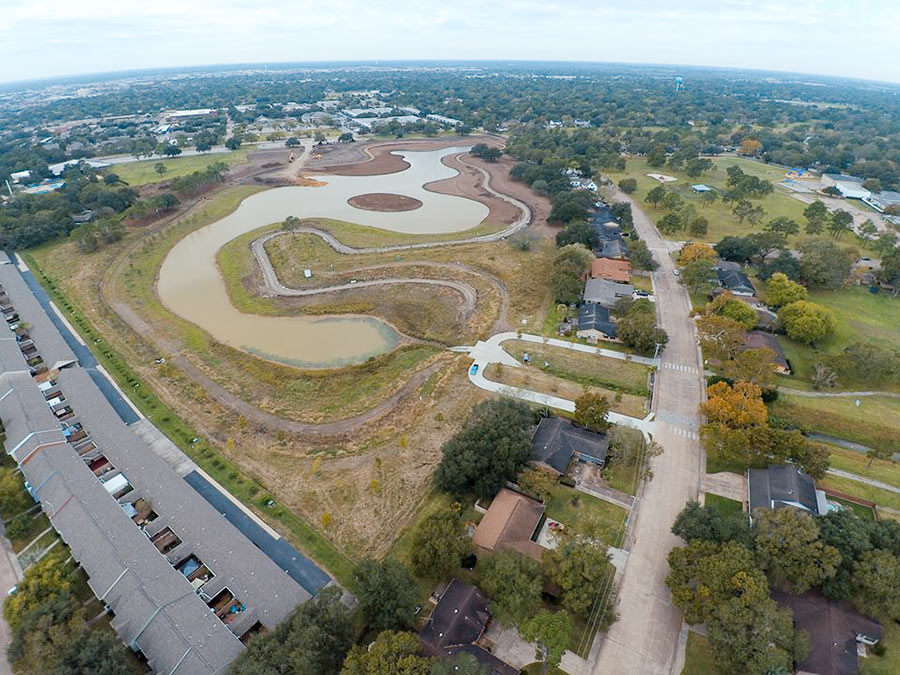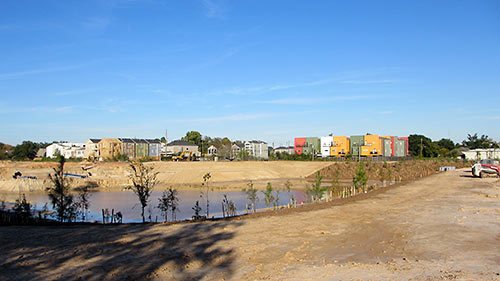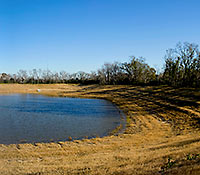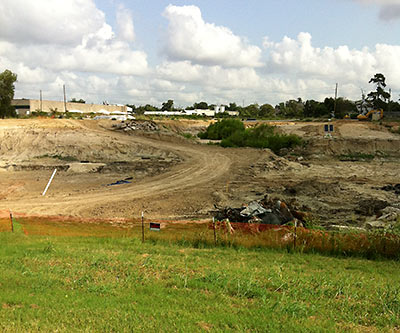 One of the more frustrating obstacles to paving more of this city is Houston’s little flooding problem. If we didn’t have so much damn water to get rid of, there’d be a whole lot more room here for basketball, high heels, rollerblades, and parking.
One of the more frustrating obstacles to paving more of this city is Houston’s little flooding problem. If we didn’t have so much damn water to get rid of, there’d be a whole lot more room here for basketball, high heels, rollerblades, and parking.
Tests now being conducted in a Rice University parking lot may change that soon. A segment of sidewalk is being built with pervious concrete, a not-so-new building material with the texture of Rice Krispies:
the product allows water to drain through rather than run off the surface. Environmental benefits include allowing water to percolate back into the soil or be detained rather than being channeled directly into storm drains; a surface that isn’t slippery when wet; and a brighter surface that helps reflect heat.
But there’s more environmental benefit here than just allowing parking lots to drain faster. Using more pervious concrete may allow us to get rid of those annoying green spaces developers are now putting in within larger developments:
The biggest cost benefit to using pervious concrete, said Max Amery, senior facilities engineer and project manager, is that it reduces or eliminates the need for water retention areas to contain run-off, which can be quite expensive in space-limited areas like a city or campus.
Next step: Revising city building codes so everyone can use it!
Photo: Portland Cement Association




 Simply filling in the 9-acre, 35-ft.-deep hole in the ground where the Astrodome now sits would eat up more than $10 million of the estimated $28 million it would cost to demolish the publicly owned structure, according to county engineers. (Another $8 million of that total has already been approved, for removal of asbestos, ticket booths, turnstiles, grass berms, and ramps, plus all the seats and interior items; that demo work is
Simply filling in the 9-acre, 35-ft.-deep hole in the ground where the Astrodome now sits would eat up more than $10 million of the estimated $28 million it would cost to demolish the publicly owned structure, according to county engineers. (Another $8 million of that total has already been approved, for removal of asbestos, ticket booths, turnstiles, grass berms, and ramps, plus all the seats and interior items; that demo work is 
